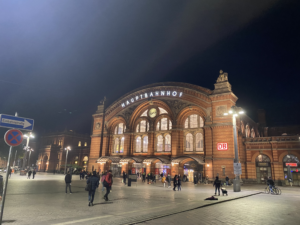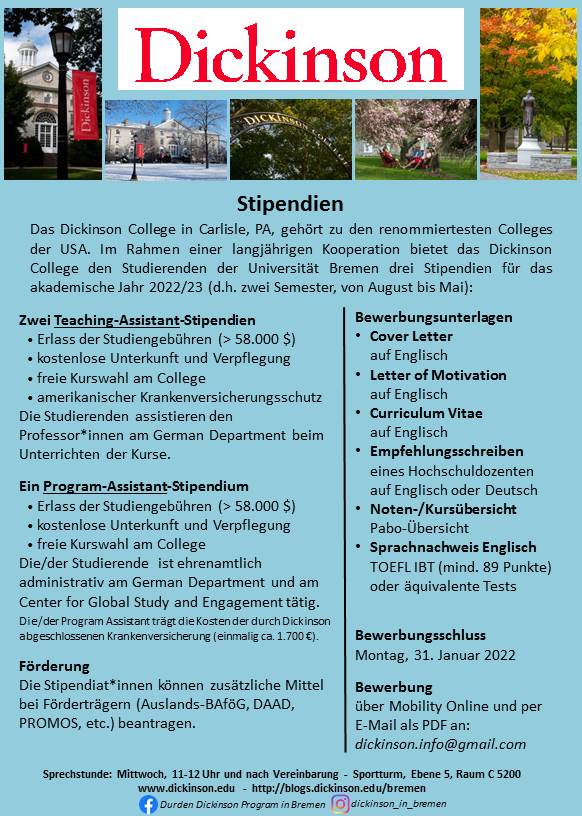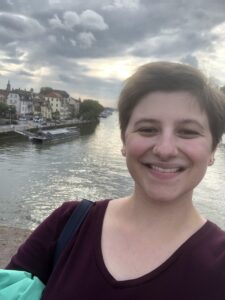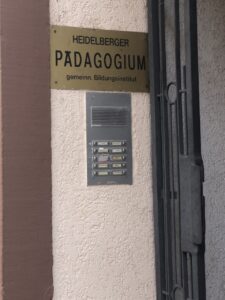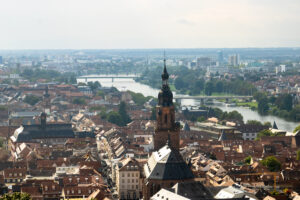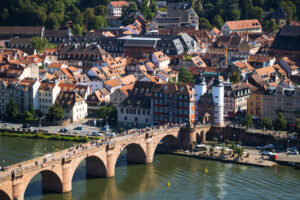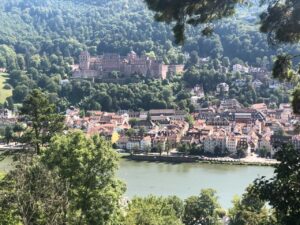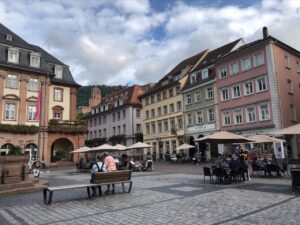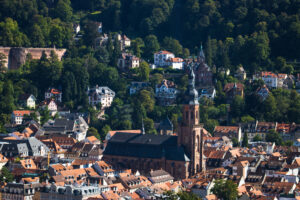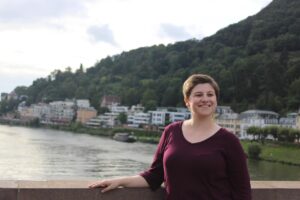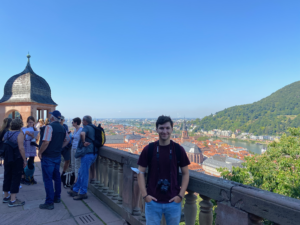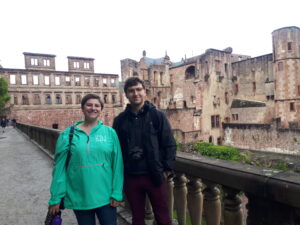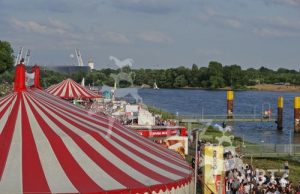by Brendan Harlan ’22
The Dickinson in Bremen (DiB) program has students begin their German abroad experience not in Bremen, but instead in another city. The German Fall semester doesn’t start until October, which is why it’s called the Winter semester, so Dickinson students have roughly five weeks between when they would usually start the Fall semester in Carlisle versus when classes begin in Bremen. That time is reserved for incoming DiB students to enroll in an intensive language course for four weeks, typically in a city of their choice. However, the ongoing COVID-19 pandemic meant that DiB arranged for us current students to join a program in the beautiful city of Heidelberg. I couldn’t have been happier though.
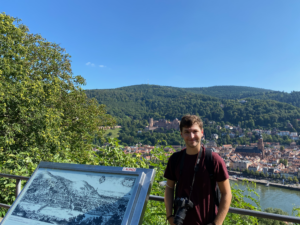
I spent four weeks in Heidelberg in a language program that met five mornings a week. The course I was in usually catered to people looking to work in Germany and needing additional language skills to do so. I learned German alongside future Uni students from South Korea and Ecuador, a future cook from China, and a future doctor from Iraq. I was the only native English speaker and the lone student from North America. However, I enjoyed learning more about Germany from my teacher and hearing about my classmates’ pasts as we practiced our German speaking skills.
The program in Heidelberg also provided housing to its students. I lived in a single room on the third floor of a house that was roughly a 20-minute tram ride from the program’s classrooms. My floor consisted of a small kitchen and tinier bathroom that I shared with two doctors-in-training from Turkey and a postgrad German Studies student from Alabama. It was here that I was introduced to my first Putzplan (cleaning schedule) and I had a difficult time rummaging through cleaning supplies with their purposes written entirely in German. My room was awesome though and when the skylight was open, I liked being able to hear the passing trams at the end of the street.
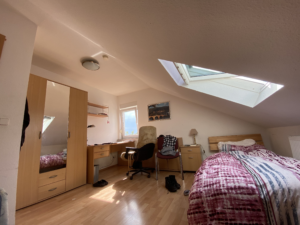
I enjoyed noticing things that clearly differentiated Heidelberg from any US city I’d been to. The German elections happened at the end of September, so virtually every light pole in the city had a smattering of political signs up. In the grocery stores, it was expected that you bring your own bag or pay for either a reusable bag or a paper bag. I somehow managed to shop at four different grocery store chains (Aldi, Rewe, Edeka, and Penny) in Heidelberg, though I found myself challenged at each by needing to bag my own groceries as fast as possible. And yes, public transportation here is awesome and despite a few close calls, I also managed to avoid getting run over by a bicyclist when I would accidentally stand in the bike lane.
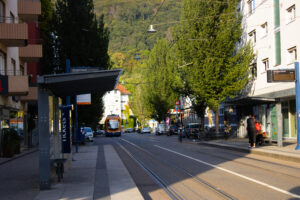
My other favorite parts of my time in Heidelberg included exploring the Altstadt, getting coffee in the city, and the various meals I had in the city or at my house. I took my camera to the Altstadt multiple times, where I visited the Schloss (castle), Alter Brücke (old bridge), and Philosophenweg (Philosopher’s Way). My favorite photos of the Altstadt are already on this blog, so I won’t repeat post them here. The Altstadt was where I would see hundreds of tourists and I often (mentally) cursed the fact that Yankees hats are the fashionable baseball cap in Europe, not the Red Sox. I enjoyed a couple meals in the Altstadt too, including one with a view across the bridge and another beneath the shadows of one of the large steepled churches.

During the 20-minute daily break in my class, I would join my fellow students at the nearby Rieglers, a chain bakery/café where I could snag a cheap cappuchino and an Apfelstrudel for a snack (or breakfast). I also found a cool coffee shop called Kaffeezimmer, where I would go to study German or edit my photos while sipping at a coffee and eating cheesecake. The first time I went to Kaffeezimmer, I stumbled with my German and somehow said no thanks to the Wifi password, but it got better from then on.
I befriended three people living on the second floor of the house I lived in. The three included Uni Students from South Korea, the United Arab Emirates, and Germany. With the postgrad student from Alabama, the five of us shared some homecooked meals, where we would cook and talk together in both English and German. One night, I took over responsibility for choosing what to make for dinner, so we had hamburgers with an assortment of toppings and a copy-cat Big Mac sauce. We also had a night of Korean Kimbap, courtesy of the South Korean student, which I’d never had before but was crazy good.
After four weeks in Heidelberg, it was time to make my way to Bremen, to Bremen Hauptbahnhof.
